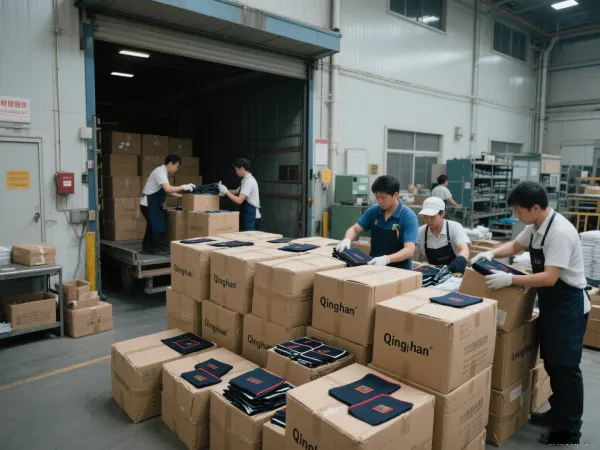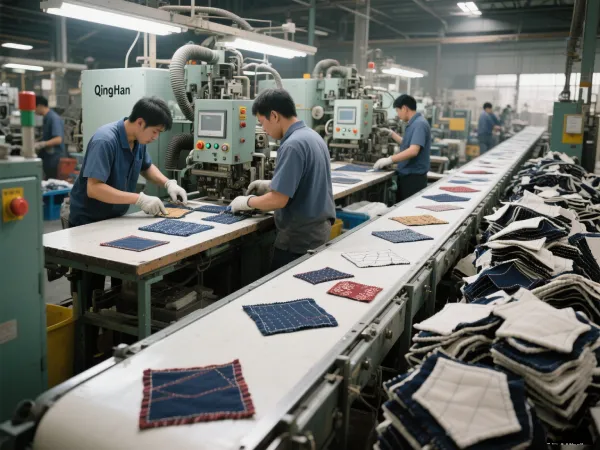In the fast-paced world of fashion, sportswear, and promotional merchandise, fast patch production has become a critical factor for success. Brands need to launch products quickly, respond to market trends, and deliver on tight schedules. But how can manufacturers deliver quick turnaround patches without sacrificing quality?
In this article, we’ll explore the reality behind producing patches at speed, the balance between development and bulk production, and how working with a reliable custom patches manufacturer like QingHan can help you achieve both speed and quality.

Why Fast Patch Production Matters
Whether you’re designing embroidered patches for a seasonal fashion collection or printed woven labels for a sports event, timing is everything. Delays in production can lead to missed launch windows, lost sales, and unnecessary stress for both the brand and supplier. That’s why brands increasingly value patch suppliers who can offer fast turnaround times without compromising on durability, color accuracy, or consistency.
The Real Challenges of Fast Patch Production
The pressure for speed can sometimes backfire if the production process isn’t well-planned. Many clients spend most of their time perfecting the design—rightly so—but then leave minimal time for the actual mass production phase. This imbalance can create urgent requests and quality issues. Here are some of the key production realities that are often overlooked:
1. Manual Silk-Screen Printing Takes Time
For printed patches or labels that involve manual silk-screening, each item must be individually aligned and printed by hand. After printing, the patches must be air-dried or oven-baked to ensure ink adhesion meets wash-resistance standards. These steps can’t be rushed, or the final product may peel or fade.
2. Embroidery and Woven Patch Limitations
Embroidered and woven patches are made using thread machines, and the more colors or intricate designs involved, the longer it takes. For instance, embroidery machines must stop and switch threads for each color, and production capacity is fixed:
- A typical woven patch machine can produce 10,000 units per day per shift.
- An embroidery machine can produce only 20 items per run per machine.
These capacity limits mean that large orders require advanced planning—even with a fast production line.

Tips for Achieving a Fast Patch Turnaround
To meet tight deadlines while ensuring patch quality, consider the following guidelines:
1. Balance Development and Production Time
Many brands spend 80% of the timeline on sample development and only 20% on mass production. We recommend a 50/50 split—spend half your time perfecting your sample, and half your time allowing production to run smoothly with enough quality control checkpoints.
2. Understand Each Material’s Timeline
Different types of patches have different requirements.
- Silk-screen patches need drying and curing time.
- Woven patches are faster but limited by thread changes.
- Cerotti in PVC o silicone may involve mold setup and color pouring, which also add time.
3. Communicate Early With Your Manufacturer
Working with an experienced custom patches manufacturer is crucial. Be transparent about your timeline, volume, and shipping method (air vs. sea). This helps the manufacturer allocate resources effectively, prevent rush fees, and avoid compromising quality due to unrealistic timeframes.
4. Account for Shipping and Customs
Even if production goes smoothly, international shipping and customs inspections can delay delivery. Some patch types, especially with unique coatings or adhesives, may have higher inspection rates. Leave enough time in your schedule for possible delays.

Why Partner With a Fast Patch Specialist
Choosing the right supplier is the difference between stress-free delivery and last-minute panic. A professional patch factory like QingHan is equipped to handle fast patch production because it:
- Has a dedicated line for urgent orders
- Understands each product’s timeline and capacity
- Offers clear communication and progress tracking
- Balances speed with ISO-quality control standards
Additionally, QingHan’s production line can be flexibly arranged based on order priority, and its logistics team is experienced in global shipping strategies—minimizing delays wherever possible.
Considerazioni finali
In today’s competitive landscape, speed is power—but only when paired with precision. If you’re looking to launch new merchandise quickly or fulfill a last-minute promotional order, choosing a fast patch production partner with real manufacturing insight is the key.
Remember: true efficiency isn’t just about working fast—it’s about working smart. Plan your project timeline to give both development and production the time they need. Collaborate closely with your patch supplier. And above all, prioritize a balanced workflow to deliver custom patches that arrive on time, on brand, and on point.



